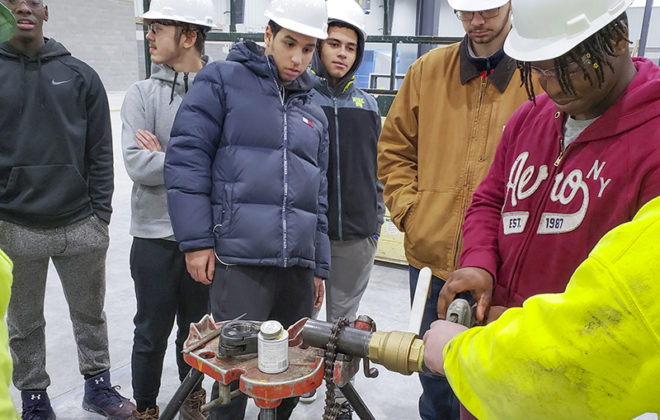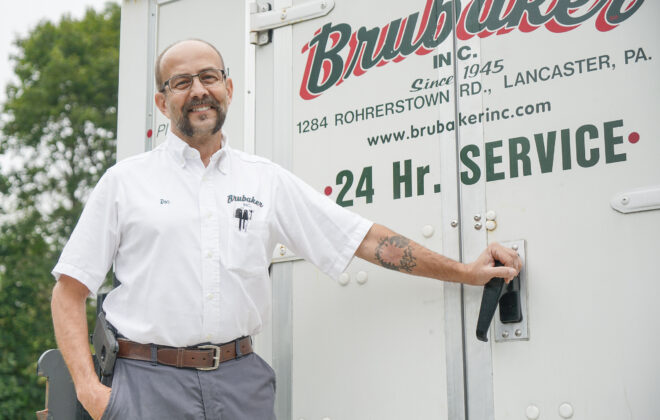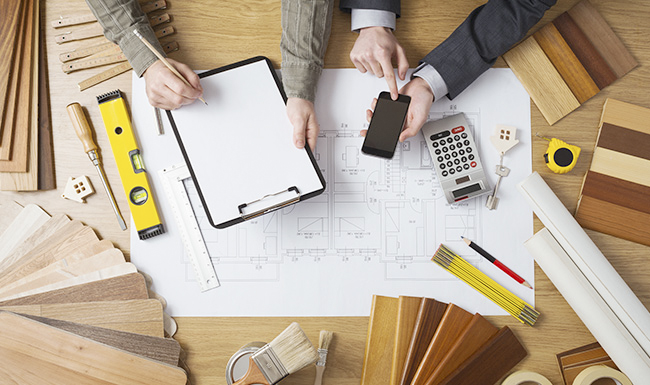
12 Tips for Planning a Home Remodeling Project
All this time spent indoors has been causing us to rethink our homes. Maybe that open concept idea isn’t so great after all? From nurseries and offices to kitchens and bathrooms, a home remodeling project can certainly improve your indoor living.
Here are 12 tips for planning your next home remodeling project:
1. Test for moisture
Basements, kitchens, and bathrooms are notorious for having moisture problems. By detecting moisture problems early, you will know whether you need extra sealing or ventilation. Moisture can easily lead to warped wood, damaged foundation, and mold. Conduct a moisture test before your remodeling project begins so you know what kind of humidity level you are dealing with.
The best way to tell if you have moisture problems in a particular area of the home is with a hygrometer, not a moisture meter that is designed to measure the moisture content in wood and other building materials.
If you get measure a Relative Humidity (RH) reading above 60%, you have high humidity and most likely moisture-compromised building materials or an air leak problem. Anything lower than 30%, and the air is too dry. The ideal humidity level is somewhere between 30% and 50%.
Another way you can test for moisture problems is by taping 2-foot squares of plastic sheeting on your basement’s walls, ceilings, and floors. Return in a couple of weeks to observe the plastic sheets. If condensation has built up on the plastic, you will need to improve your basement humidity levels. This may include foundation improvements as well as an upgraded humidification system.
If you are remodeling your basement and humidity levels are too high, you may need to seal the foundation. To avoid mold, bacteria, and other moisture problems, fix leaks and clean up spills immediately.
2. For add-ons, consider an HVAC zoning system
If you are busting at the seams and installing a new room or section of the home, ask your HVAC contractor about zoning solutions. Instead of running ductwork to the new area, you can use a separate zoned system, which uses no ducts. The add-on will have a separate temperature control.
3. Fix insulation problems early
When remodeling your home, it’s a good idea to ensure proper insulation. Consider insulating both hot and cold water pipes before you enclose them. This will increase energy efficiency and prevent frozen pipes in the winter.
Keep in mind that there are minimum insulation requirements for remodeling.
Basement insulation is different from attic insulation. Consult a professional HVAC technician about proper insulation and ventilation before tackling any remodeling project.
4. Schedule professional heating and cooling inspection
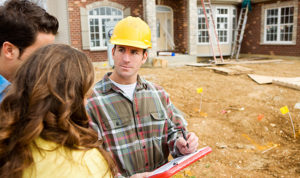
You don't want to plan a remodel and then find out you need to spend a lot of money on your HVAC system. We recommend scheduling a professional HVAC inspection before planning a remodel. One potential problem of having your HVAC system in a remodeled area such as the attic or basement is the potential for combustion byproducts entering the space, such as carbon monoxide.
Whenever fuel is burned, combustion gases are created, some of which can be deadly such as carbon monoxide (CO). Every home should have working CO detectors on every level of the home, but especially in basements with a fuel-burning appliance. Test you smoke and co detectors every 30 days.
For safe and efficient operation, schedule a professional furnace, water heater, and air conditioner tune-up every year. Never attempt furnace or water heater repair on your own.
Whenever remodeling the home, it’s important to consider indoor air quality, ventilation, and other common indoor air problems.
Before starting your basement remodeling project, contact a professional HVAC technician to inspect the health and functionality of your heating and ventilation system.
When you have a pro in your home, you can also ask them important questions about your carbon monoxide detectors, humidity levels, and how to increase energy efficiency.
One way to bypass the dangers associated with fuel-based HVAC systems is a ductless mini-split system. Ductless units are connected to outdoor heat pumps, eliminating the need for ducts and reducing your chance of combustion-related problems.
When remodeling, NEVER cover HVAC or water heating systems. Your furnace and water heater need proper airflow for safe and efficient combustion. Do not enclose these units! Consult a professional HVAC technician about your basement remodeling plans before implementing them.
5. Other HVAC and ventilation concerns
Designing and remodeling a home is typically a fun experience. While there are very few rules when designing your home, there are a few heating and air conditioning rules that you should keep in mind.
Follow these rules and your project should move forward without any AC related issues:
- Don’t run your air conditioning while working.
When you are using power tools and other home remodeling tools, you are likely to send dust flying in to the air and flying in to your working AC vents. The solution? Do not run the AC while you are working. Also keep the vents closed if possible and covered so that dirt, dust, and other debris particles from your remodel do not end up inside your home AC unit.
We highly recommend speaking with a professional HVAC company about proper ventilation for your remodeling project. You may need a portable ventilation unit.
Store all paint, glue, gasoline, barbecues, gas-powered lawn equipment, and other sources of air pollution out of any living areas.
- Change your air filters.
Regardless of how careful you are, dust and dirt will find their way into your AC unit while you are remodeling and you should be prepared to change the filters more often to ensure clean air quality. Although usually air filters are not replaced more than once every few months, you should change your air filter as often as needed while remodeling. Make it a point to check the cleanliness of the filter on a weekly basis and replace if dirt, debris, and dust have made their way into the filter.
By following these tips, you should have a smooth remodeling process with your AC unit working well throughout and after the remodel.
Older homes are certainly more work when you consider all that needs to be updated, changed, and amended to make them livable and up to modern day standards. That being said, however, there are a few different issues that you can look for that will help you figure out how to renovate an old house and save time and money doing it.
6. Seal and insulate
In the effort to waterproof your home and make it suitable for year-round use, you’ll want to air seal and insulate the renovated area. Consider addition extra insulation to the ceiling and floor as well. Speak with an HVAC expert about basement and attic insulation and ventilation levels.
You can use mastic sealant or aluminum foil tape to seal air duct leaks, but don't use duct tape!
7. Look for efficiency
 Though it may be tempting to spend $20,000 on that brand new modern kitchen or bathroom that you love, it is far more cost and time effective to consider how to make your space more efficient as opposed to grand. Things like cabinets that are up and away so you can make the most of space, efficient refrigerators, stoves, and other appliances, and making the most of the space that you have is going to be far more effective than spending all of your renovation budgets on one room.
Though it may be tempting to spend $20,000 on that brand new modern kitchen or bathroom that you love, it is far more cost and time effective to consider how to make your space more efficient as opposed to grand. Things like cabinets that are up and away so you can make the most of space, efficient refrigerators, stoves, and other appliances, and making the most of the space that you have is going to be far more effective than spending all of your renovation budgets on one room.
8. Windows
Another issue that homeowners commonly run into with older homes are windows that are not large enough, not insulated enough, and quite simply not efficient enough to really do their home justice. There are a few different things you can do to make this a much easier process. A light tube is an efficient way to bring in more natural light and most contractors can help you find the right tube for your windows and the right installation. If you are looking to simply improve efficiency you can replace windows and opt for those that are better insulated, argon-filled, or simply that work to filter out light and make your home more efficient overall.
9. DIY demolition
Doing your own demo can save you hundreds over hiring a professional company. If you have the manpower and the time then you should roll up your sleeves and get a bit dirty. Taking out cabinets, floors, toilets, and even walls with the right supervision can help you save money on the overall cost of your demo giving you more money to devote to the upgrades and remodels. This is also a great way to feel connected to your home and to really feel like you were an integral part of the process. Doing your own demo is also a great stress reliever and can help you get down to business and get the work done on your own time.
10. Upcycle
This means to take old items and reuse them. You can find tons of secondhand shops, recycling centers and more that offer items that are discount, that have been used in other homes, and that have been salvaged that can save you tons of money and may even help you to preserve the old spirit of your home. These items can save you time, money, and can add some serious character to your older home making it perfect for anyone that wants to keep some of the flavor of their home intact.
11. Let your contractor help
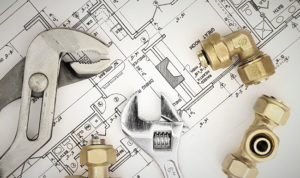 Though it can be difficult to let go of the reigns and let someone else be in charge, if your contractor knows a shortcut or knows someone that can help save you time and money, let them help you. That is their job. It is going to be far easier if you allow your contractor to use their resources and use their backups and contacts to help save you time and money. They are still going to be making money no matter if they do save you money so let them help out. They may even know so shortcuts that can help you get through your reno faster and back into your home. No matter what you choose to do, knowing how to take some of the effort and stress out of your renovation will make the process much smoother. Allowing your contractor to help out when it comes to decisions and using items that may be second hand can really save you time and stress and can help you get your reno done faster than you ever imagined or dreamed.
Though it can be difficult to let go of the reigns and let someone else be in charge, if your contractor knows a shortcut or knows someone that can help save you time and money, let them help you. That is their job. It is going to be far easier if you allow your contractor to use their resources and use their backups and contacts to help save you time and money. They are still going to be making money no matter if they do save you money so let them help out. They may even know so shortcuts that can help you get through your reno faster and back into your home. No matter what you choose to do, knowing how to take some of the effort and stress out of your renovation will make the process much smoother. Allowing your contractor to help out when it comes to decisions and using items that may be second hand can really save you time and stress and can help you get your reno done faster than you ever imagined or dreamed.
12. Ponder painting projects
While you are dreaming and planning your remodeling project, you can start with less costly and complicated projects, such as repainting a room, spackling holes in the wall, or simply rearranging things. You can also do a deep cleaning on everything from your appliances to your outdoor furniture.
You should assume that paint in home built before 1978 contains some lead. Lead-based paint is a harmful pollutant that can be extremely damaging to brains and nervous systems. For more information on lead safety, visit the EPA’s Lead Page.
In conclusion, you want to detect as many problems as you can before any work begins. Find and fix the underlying source of your humidity, insulation, and ventilation problems. Otherwise, the problem will simply resurface down the line.
When done properly, remodeling can significantly improve your quality of life. Make sure everything is safe and in good shape by scheduling a pre-renovation consultation with the professionals at Brubaker Inc.
For fast, safe, and professional home service solutions in the Central Pennsylvania area, rely on Brubaker Inc. We’re available 24/7 for all your heating, cooling, plumbing, and electrical needs.
Categories
Recent Posts
- Brubaker Inc: One Year as an Employee-Owned Company & Why It Matters to You
- Top 5 Signs It’s Time to Replace Your Heating System in Lancaster, PA
- Aimee Deraco: Small Businessperson of the Year at the 2024, Lancaster Chamber Dinner
- Home Heating Hacks to Save Money and Energy
- Combat Winter Dryness and Sickness
- How to Keep Your White Clothes Looking Fresh
- 4 Smart Upgrades for Your Plumbing
- Top Kitchen Remodeling Trends and Options for 2021
- Who invented the dishwasher?
- Frozen Pipes?


